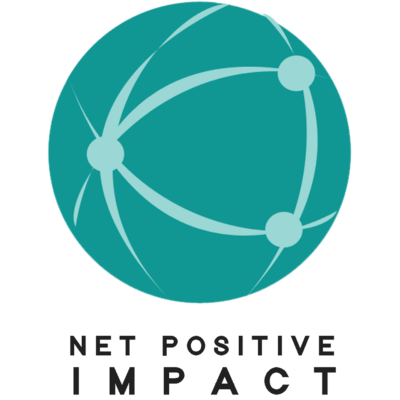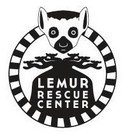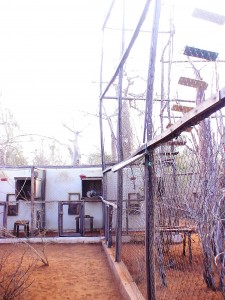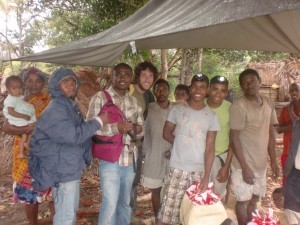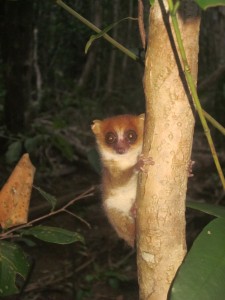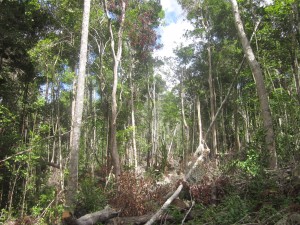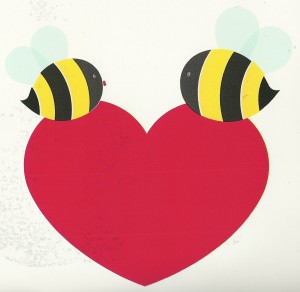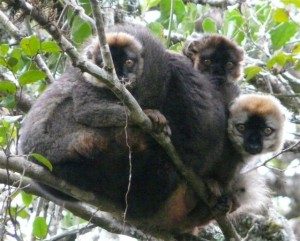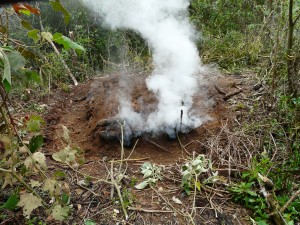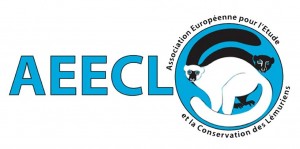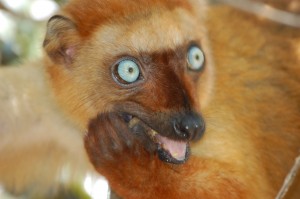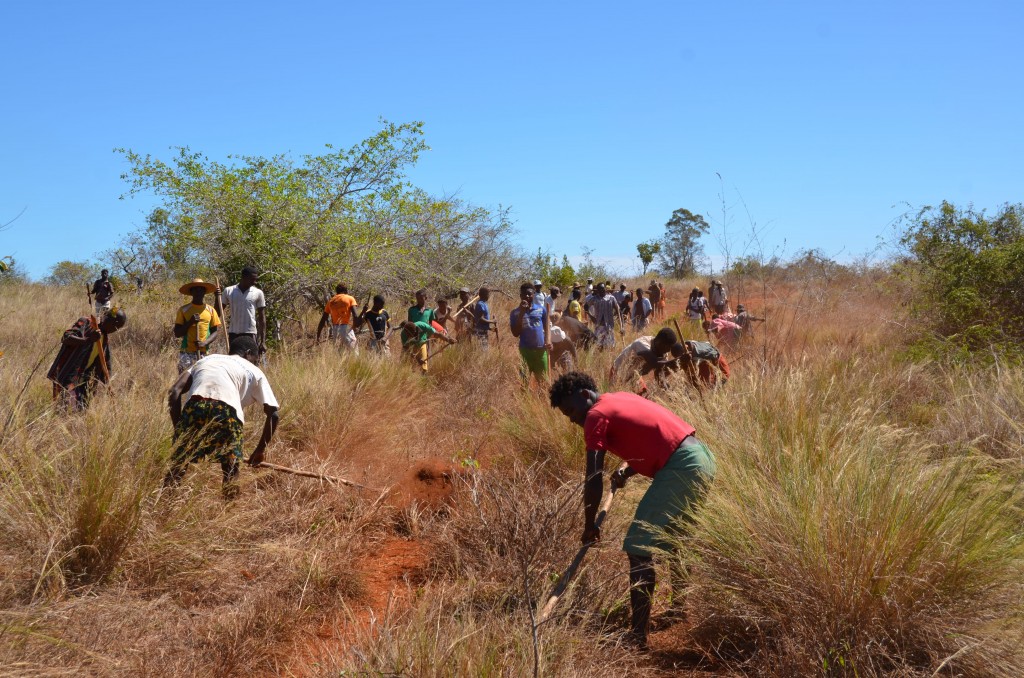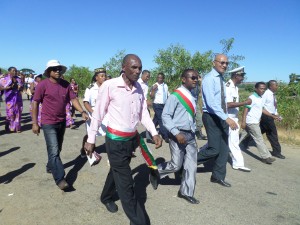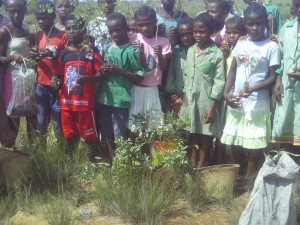Man and the Environment’s Net Positive Impact program
What We Do
The main objective of Man and the Environment’s Net Positive Impact program is to ensure long-term forest and lemur conservation, as well as overall biodiversity conservation, through the involvement of local communities. This includes management programs and economic activities in support of the environment.
Net Positive Impact is a program of the Non-Governmental Organization Man and the Environment. We are a French organization working in East and Northwest Madagascar.
How We Protect Lemurs And Other Wildlife
Habitat Protection
As lemurs cannot survive when their natural habitat is in danger, we work on habitat preservation and environmental conservation in the Vohimana, Tsaramandroso and Ambalakalanoro forests by developing environmental programs. Our main actions are to make these sites “protected areas” to ensure their survival. We also monitor species, study their long-term acclimatization and take actions to promote their survival in the zone, through reforestation and agro-forestry.
Ecotourism
Infrastructure to develop ecotourism has been constructed in the Vohimana Forest. The goal is to raise awareness among visitors and the Malagasy community about the site’s biodiversity and protection, and to create a sustainable income source for the local people working on the project. Visitors are encouraged to participate in monitoring species.
Environmental Policy
We promote sustainable lemur conservation through the design of management plans, including local communities’ development and private sector involvement.
What Lemur Species We Protect
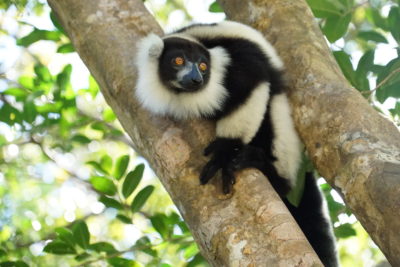
Varecia Variegata from the Vohimana forest.
Net Positive Impact operates in three locations.
The Vohimana forest in the Mantadia – Zahamena:
- Indri Indri indri
- Diademed sifaka Propithecus diadema
- Black-and-white ruffed Lemur Varecia variegata
- Eastern lesser bamboo lemur Hapalemur griseus
- Red-bellied lemur Eulemur rubriventer
- Common brown lemur Eulemur fulvus
- Goodman’s mouse lemur Microcebus lehilahytsara
- Eastern woolly lemur Avahi laniger
- Weasel sportive lemur lepilemur mustelinus
- Greater dwarf lemur Cheirogaleus major
- Aye-aye Daubentonia madagascariensis
- Hairy-eared dwarf lemur Allocebus trichotis
- Brown mouse lemur Microcebus rufus
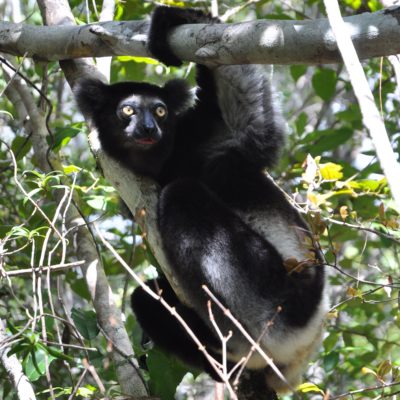
Indri Indri from the Vohimana forest
The Tsaramandroso community forest in the buffer zone of the Ankarafantsika National Park:
- Coquerel’s sifaka Propithecus coquereli
- Milne-Edwards’ sportive lemur Lepilemur edwardsi
- Western woolly lemur Avahi occidentalis
- Golden-brown mouse lemur Microcebus ravelobensis
- Mongoose lemur Eulemur mongoz
- Gray mouse lemur Microcebus murinus
- Fat-tailed dwarf lemur Cheirogaleus medius
- Common brown lemur Eulemur fulvus
The Ambalakalanoro forest in the north-west coast:
- Verraux’s sifaka Propithecus verreauxi
- Common brown lemur Eulemur fulvus
- Gray mouse lemur Microcebus murinus
- Fat-tailed dwarf lemur Cheirogaleus medius
- Mongoose lemur Eulemur mongoz
- Western lesser bamboo lemur Hapalemur occidentalis
- Masoala fork-marked lemur Phaner furcifer
- Western woolly lemur Avahi occidentalis
- Milne-Edwards’ sportive lemur Lepilemur edwarsi
How We Support Local Communities
Community Partnerships and Sustainability
Net Positive Impact partners with local organizations to ensure projects’ sustainability and community involvement. For the Vohimana project, the partners are different local associations, Mercie Vohimana, Manarapenitra, Zanatany, each specialized in a field. For the Ambalakalanoro project, the partner is the local district. For the Tsaramandroso project, the partners are VOI Mamelonarivo and CIRAD.
Social support
The income generated from ecotourism will be redistributed to the school and the health center that we constructed in a village near Vohimana, Ambavaniasy. The objectives are to improve the living conditions of local communities, enhance education access and reduce risk of disease. Secondly, protecting the forest for ecotourism will be shown to be a potential route to improving living conditions in the area, encouraging villagers to protect it and thus the species living in it.
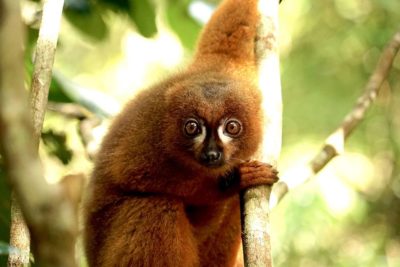
Eulemur Rubriventer from the Vohimana forest
Sustainable agriculture productivity improvement
The objective is to support environment-friendly agriculture to prevent slash-and-burn farming or other practices jeopardizing biodiversity. We started a program of ginger cultivation with 120 villagers around the forest. A distillery of essential oil has been constructed and is managed by local workers. Ginger seeds have been given to selected farmers and Malagasy firms will buy the production.
The former traditional practices were participating in the destruction of the forest. Slash-and-burn cultures, as well as charcoal production, threaten the forest and the wildlife it shelters. It is clear that other income-generating activities linked to sustainable natural resources’ use could be promoted to support conservation.

